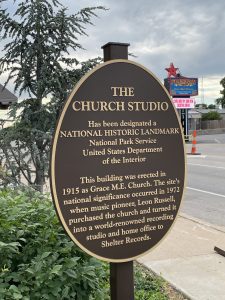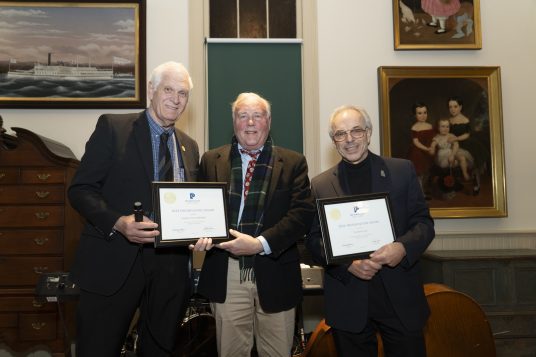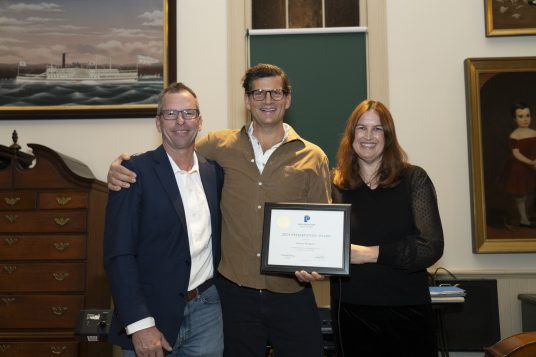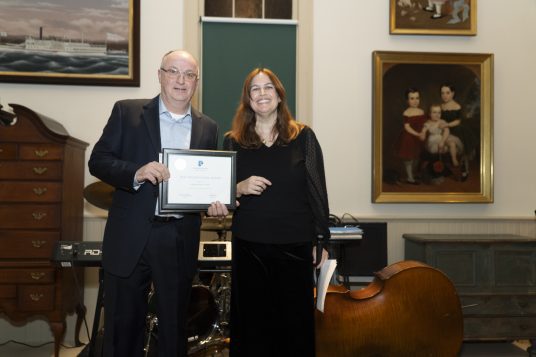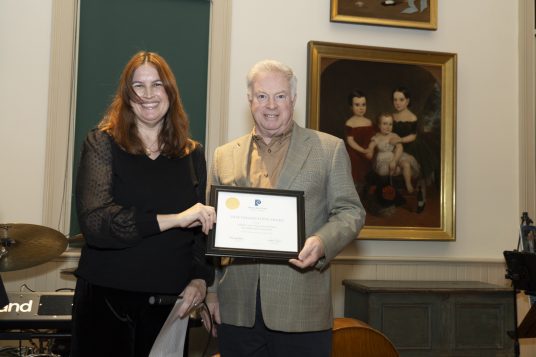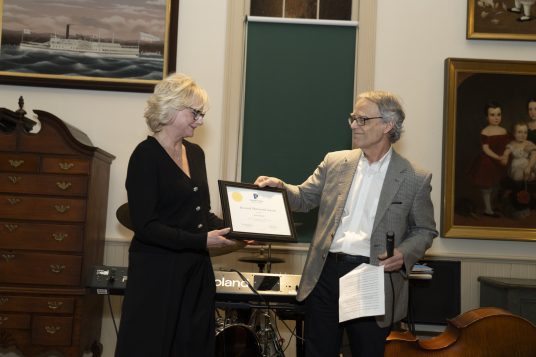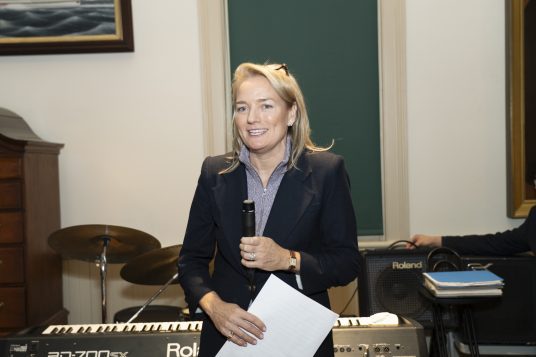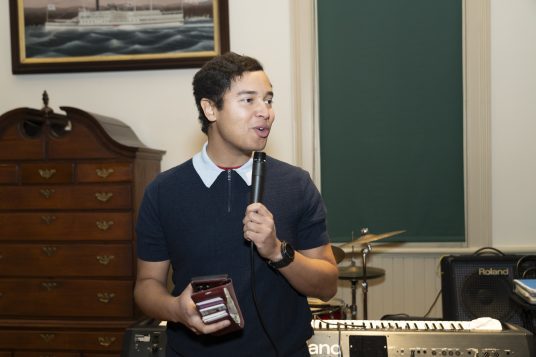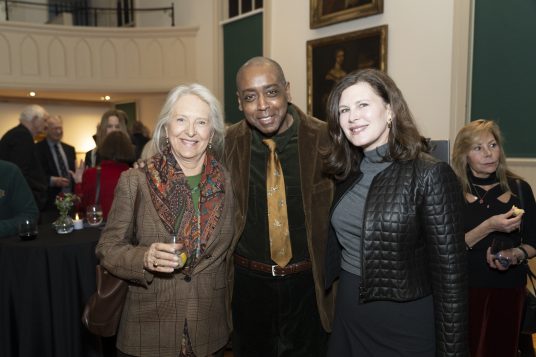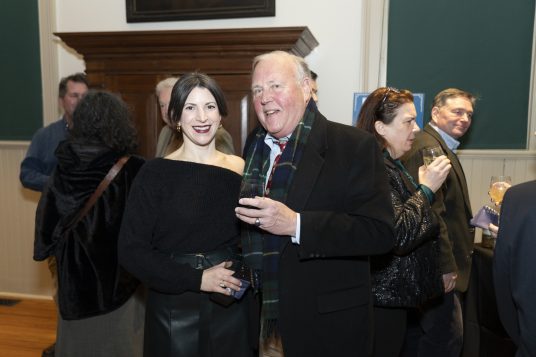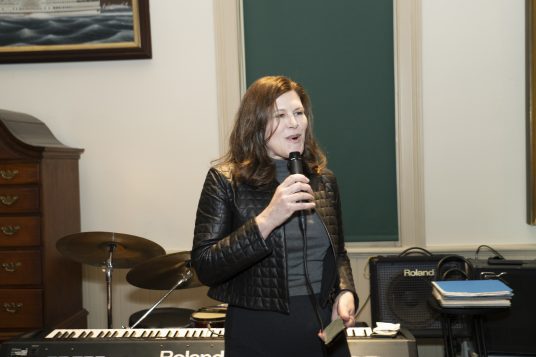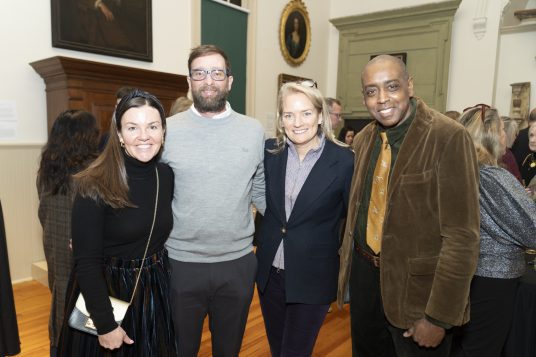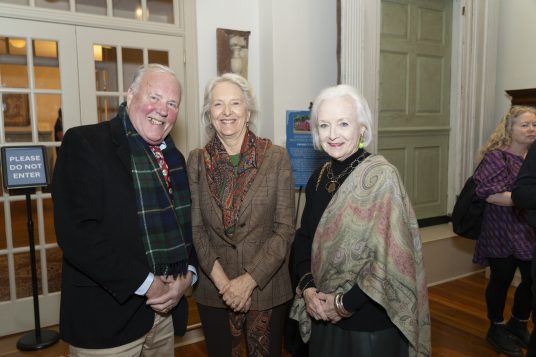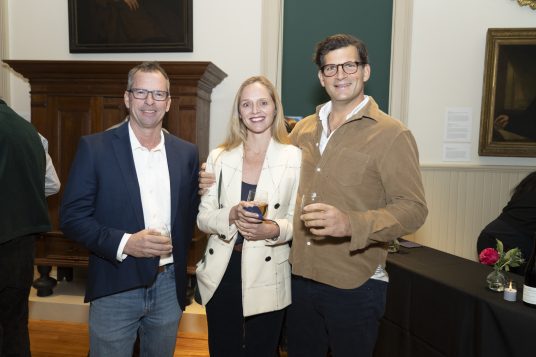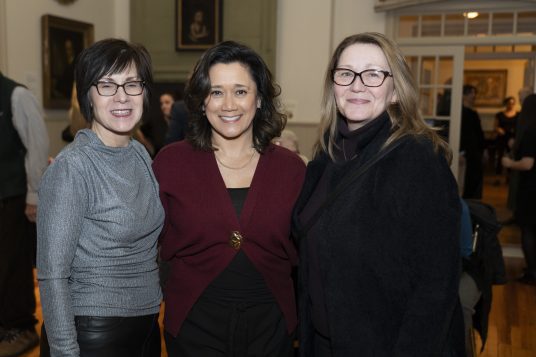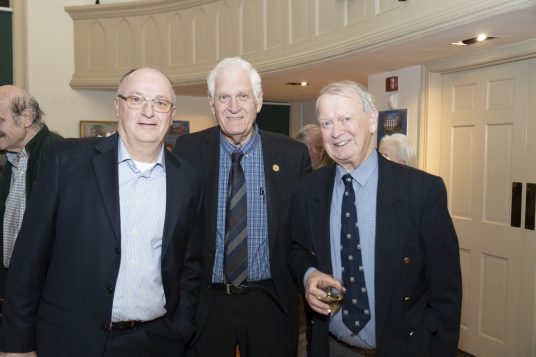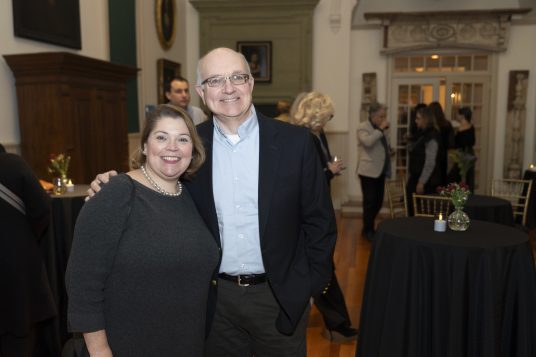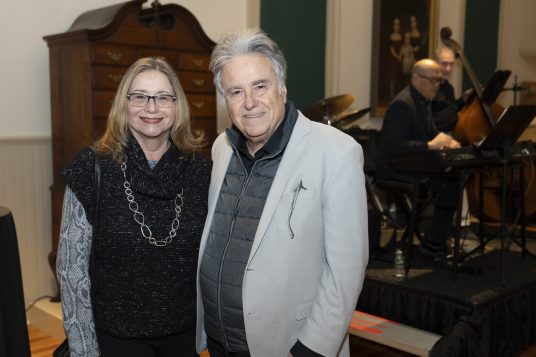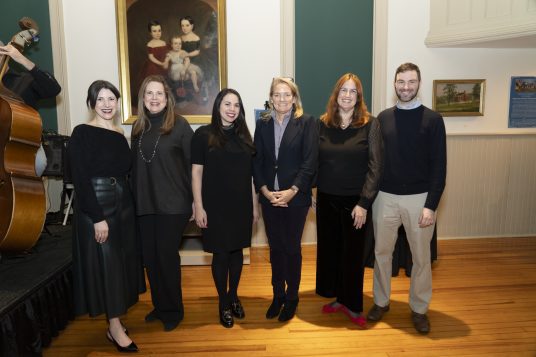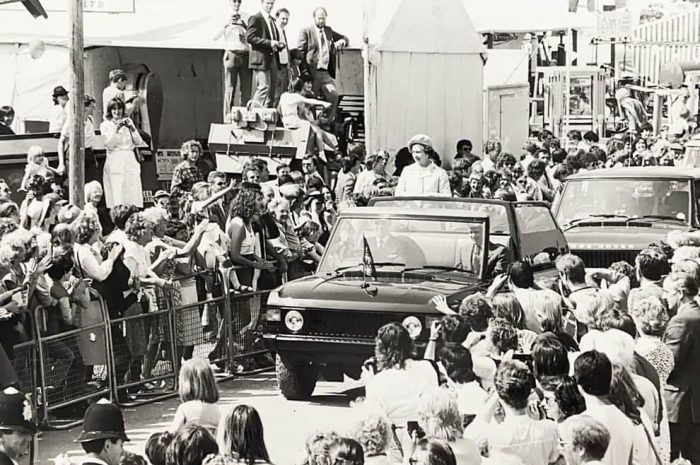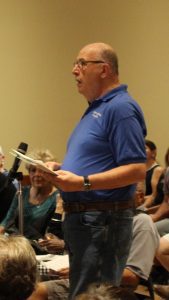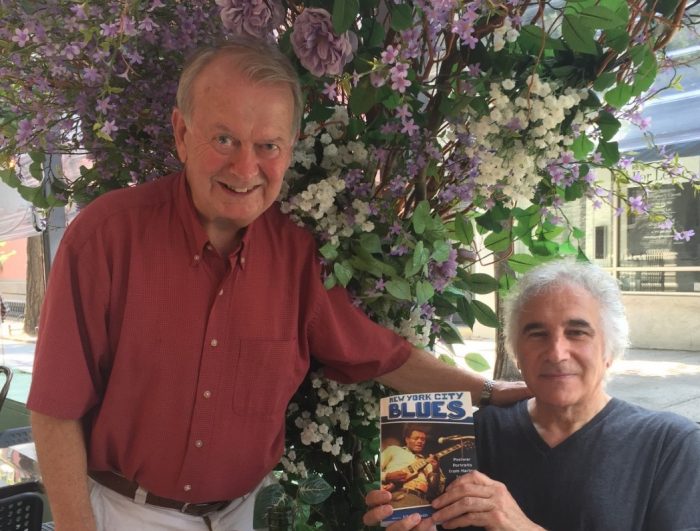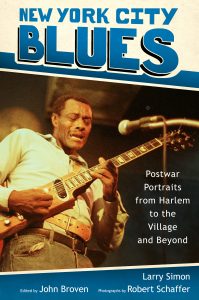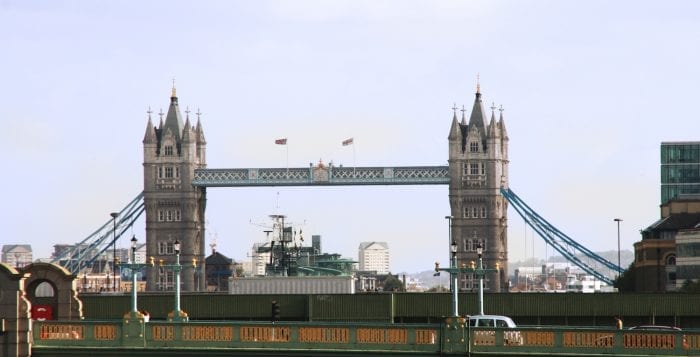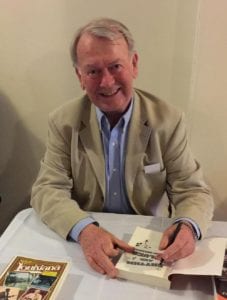By John Broven
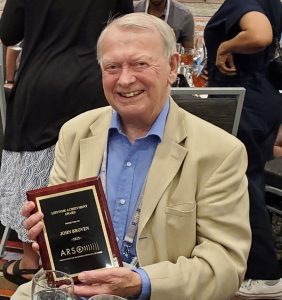
During my 30 years living on Long Island, I have been fortunate to travel to places south, west and north in the United States, but never to the heartland.
So, with a curious mind, it was an easy decision to attend the Association of Recorded Sound Collections annual conference in Tulsa, Oklahoma, May 14-17.
One of the panels revolved around my favorite subject, the independent record industry from the post-World War II years onward. This is where rock ‘n’ roll music was born.
My presentation was accepted on “The Pioneering Black NYC Record Men, with a Nod to New Orleans.” This was based on my taped interviews with Bobby Robinson of Harlem in 1986 and New Orleanian Harold Battiste, then living in Los Angeles in 1975, also including Juggy Murray of New York. Interview excerpts were embedded in an accompanying video professionally prepared by Debbi Scott Price of Stony Brook.
Robinson captured the street beat sound of Harlem from the 1950s blues and vocal group era to hip hop in the late 1970s. In 1959, he had a national No. 1 record on the pop charts with “Kansas City” by Wilbert Harrison. Murray was responsible for breaking Ike and Tina Turner’s very first hits on the Sue label and his recordings were a bedrock of the British 1960s Mod era. While on the West Coast, Battiste established the careers of Sonny & Cher (“I Got You Babe”) and Dr. John. How lucky was I to meet and get to know these great record men.
To the heartland
And so on a chilly May 14, I set out for Tulsa. The Long Island Rail Road train from Stony Brook was on time and I disembarked at Woodside station for LaGuardia Airport. There, with suitcase and bag in hand, I was confronted by an impossibly steep staircase, probably unchanged since Victorian times. Happily, a kind gentleman grabbed my case and we found our way through the bustling streets to the free bus to LaGuardia. He turned out to be a Kenyan citizen now living in Texas, and our British Commonwealth backgrounds created an immediate bond.
The Delta Air Lines direct flight to Tulsa was slightly delayed but we arrived on time at the “oil capital of the world.” A courtesy shuttle bus was arranged by the Hyatt Regency Hotel. Here, in early evening, was my first taste of Oklahoma. The vegetation was surprisingly green, yet I was mindful of the hurt of the Dust Bowl era, also the American Indian heritage.
During the conference, we visited Leon Russell’s Church recording studio, which is still active. In its time, George Harrison, Eric Clapton and Stevie Wonder have all recorded there. Oklahoma itself has deep music history ranging from the western swing of Bob Wills, Black bandleaders Ernie Fields and Roy Milton to the folk music of Woody Guthrie and the mesmeric rock of J.J. Cale. A film screening of “Johnny Cash at Folsom Prison” was also arranged.
I couldn’t resist the invitation of distinguished German record collector, Dr. Rainer Lotz, to a gourmet meal at the best restaurant in Tulsa, the FarmBar. We had a “traditional” five-course meal from local produce with the menu showing wine pairings from Oregon, Austria and France. Lotz, in his inimitable way, insisted that as we were in America, we must have all-American wine pairings. And the charming sommelier and her staff duly obliged. A splendid evening culminated in two couples at the adjoining table inviting us Europeans to join them for a final drink. When I said I didn’t realize that Oklahoma was so near to Texas, one of them quipped, “Yes, Texas is south of heaven.”
I managed to call in quickly into the Woody Guthrie and Bob Dylan centers. Sadly, I ran out of time to visit the Greenwood Rising Black Wall St. History Center, covering the appalling destruction of the Black part of town in 1921.
So what was it like for an East Coast “elitist” to be in the heartland? It was an eye opener. Not once did I see a lawn sign or banner promoting the current president, nor was he mentioned by any of the friendly locals. The only time I heard his name was when I caught up with the news on CNN and MSNBC. The Democratic strategists have work to do.
ARSC awards ceremony
The conference Closing Banquet and ARSC Awards Program was held on Saturday, May 17. It was an Oscar-like OMG moment when the Lifetime Achievement Award was announced to … John Broven. The citation included my books, writing for Blues Unlimited and Juke Blues magazines and my stint with Ace Records of London.
In an impromptu speech, I thanked my fellow pioneering Brit writers and researchers — we were no more than keen amateurs with day jobs — who from the 1960s onward documented America’s great musical heritage. This award, essentially on their behalf, came from an organization whose membership includes representatives from the Library of Congress, the Smithsonian, major universities and public libraries. In my later years, I am indebted to the staunch support of my late wife Shelley, the daughter of a record man.
Riding on cloud nine, I made the journey back home Sunday to East Setauket. It took three hours to fly from Tulsa to New York. It took another three hours to get from Jamaica station to Stony Brook, courtesy of LIRR.
Still, I was greeted by a garden with irises, lupines, foxgloves and dogwood tree in full bloom. And my kitchen had been beautifully repainted in Shelley’s favorite color. Life could not be grander for a lad who had grown up in austerity postwar Britain with a passion for American rock ‘n’ roll music.
One of the first records I played on my return? It had to be Bob Wills and His Texas Playboys’ “Take Me Back To Tulsa.”
Author John Broven was copy editor at TBR News Media from 2006-24.
— All photos courtesy John Broven



